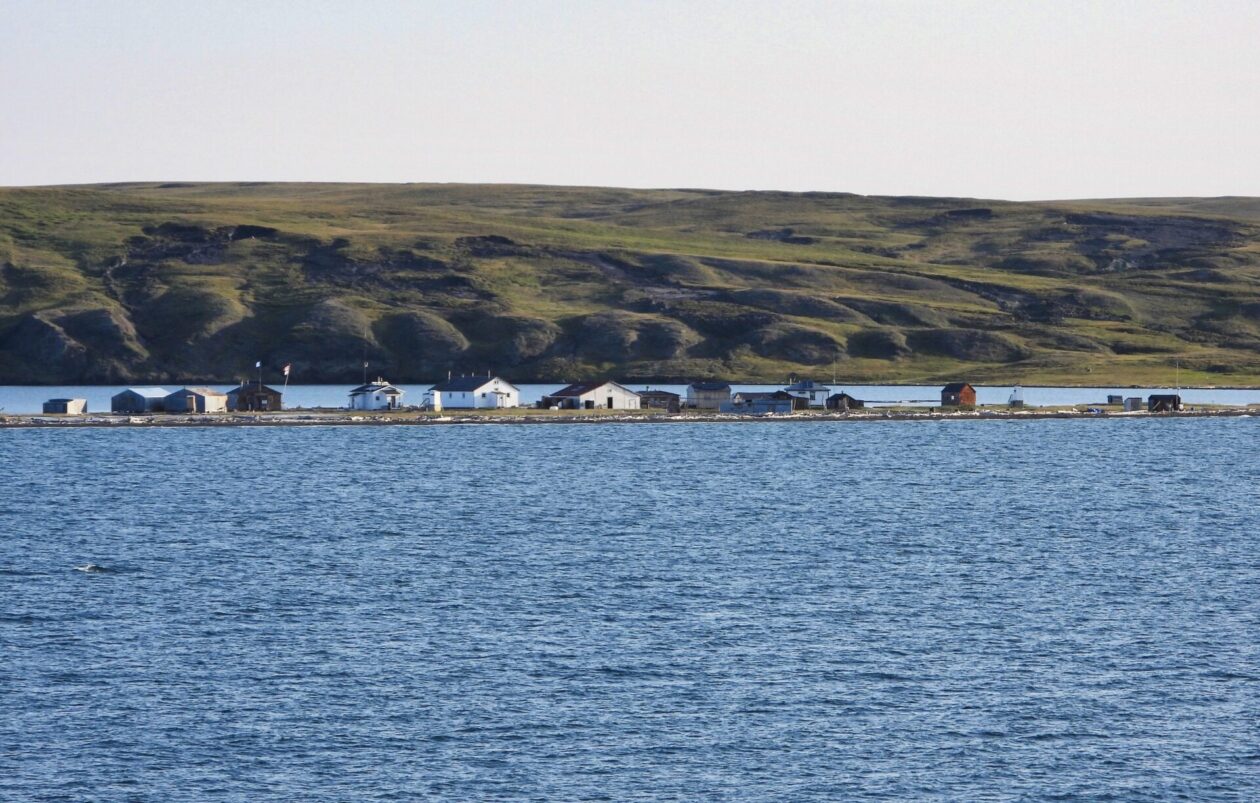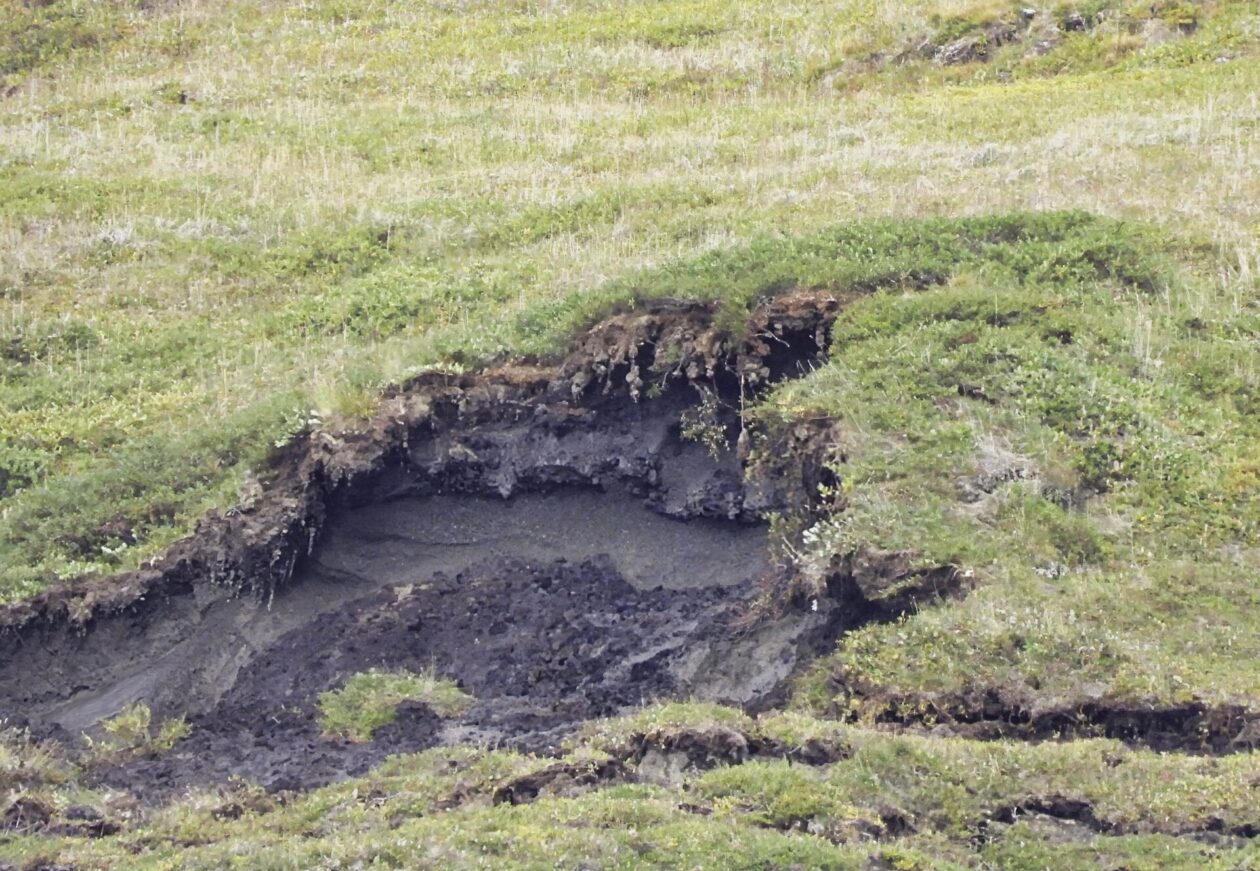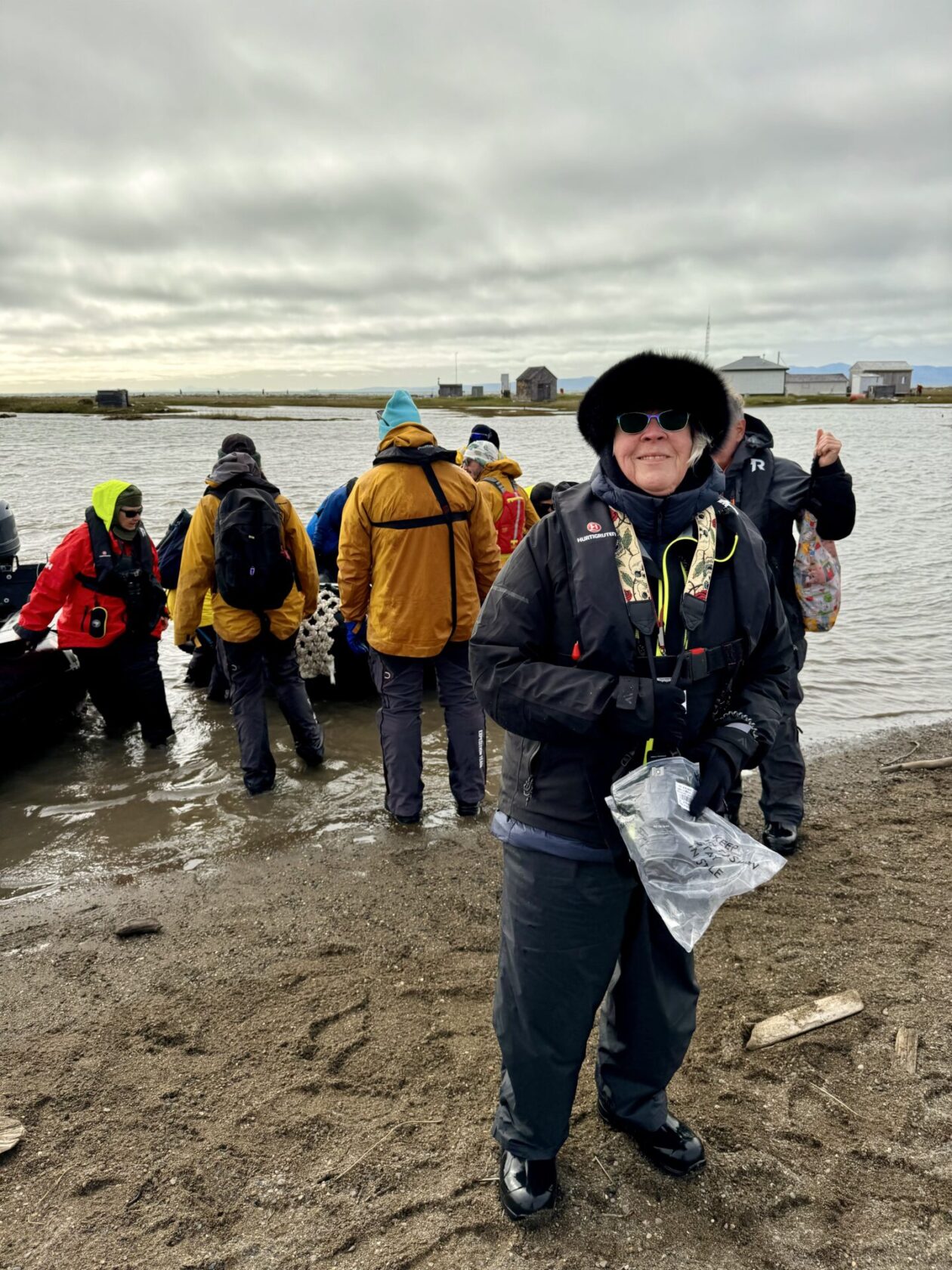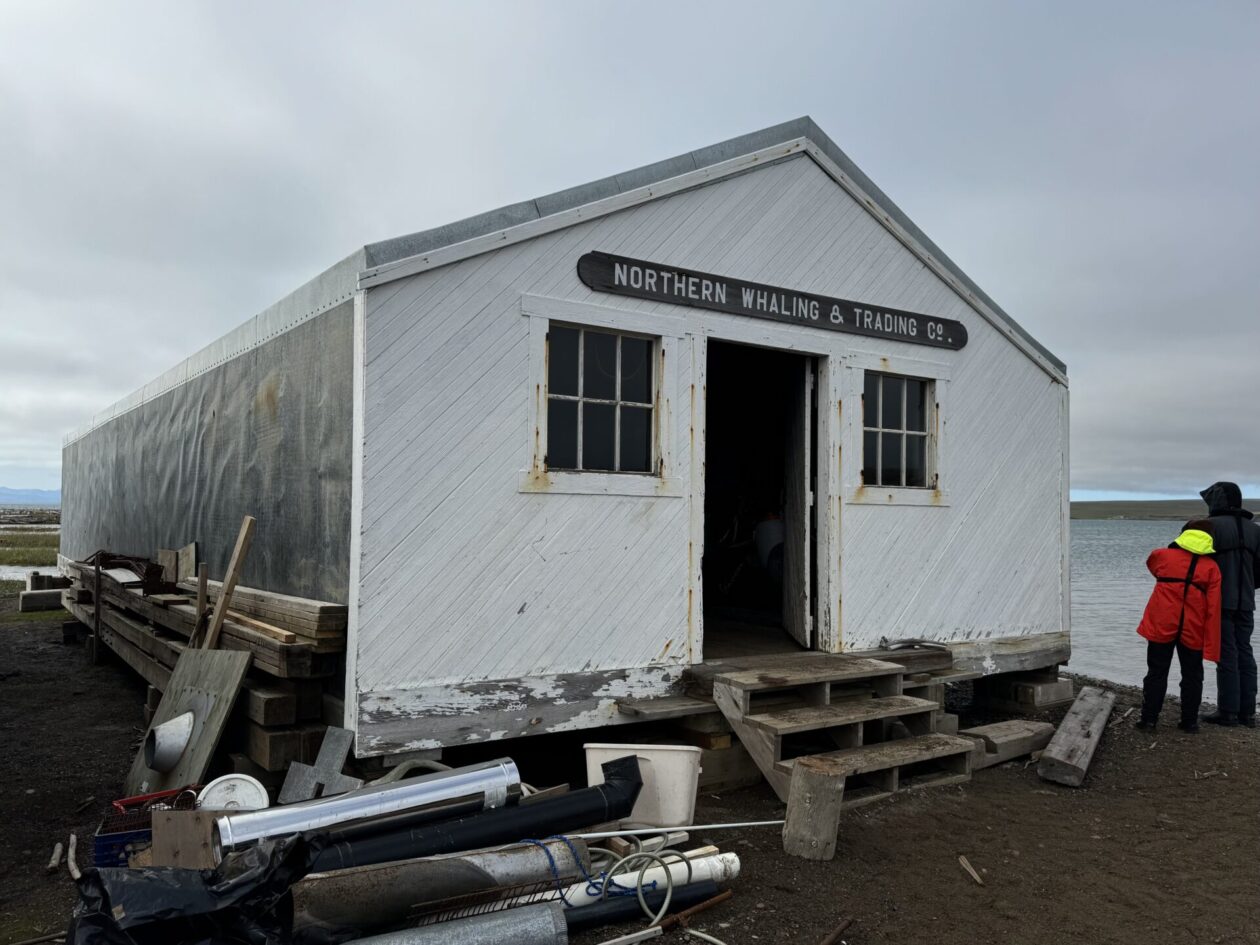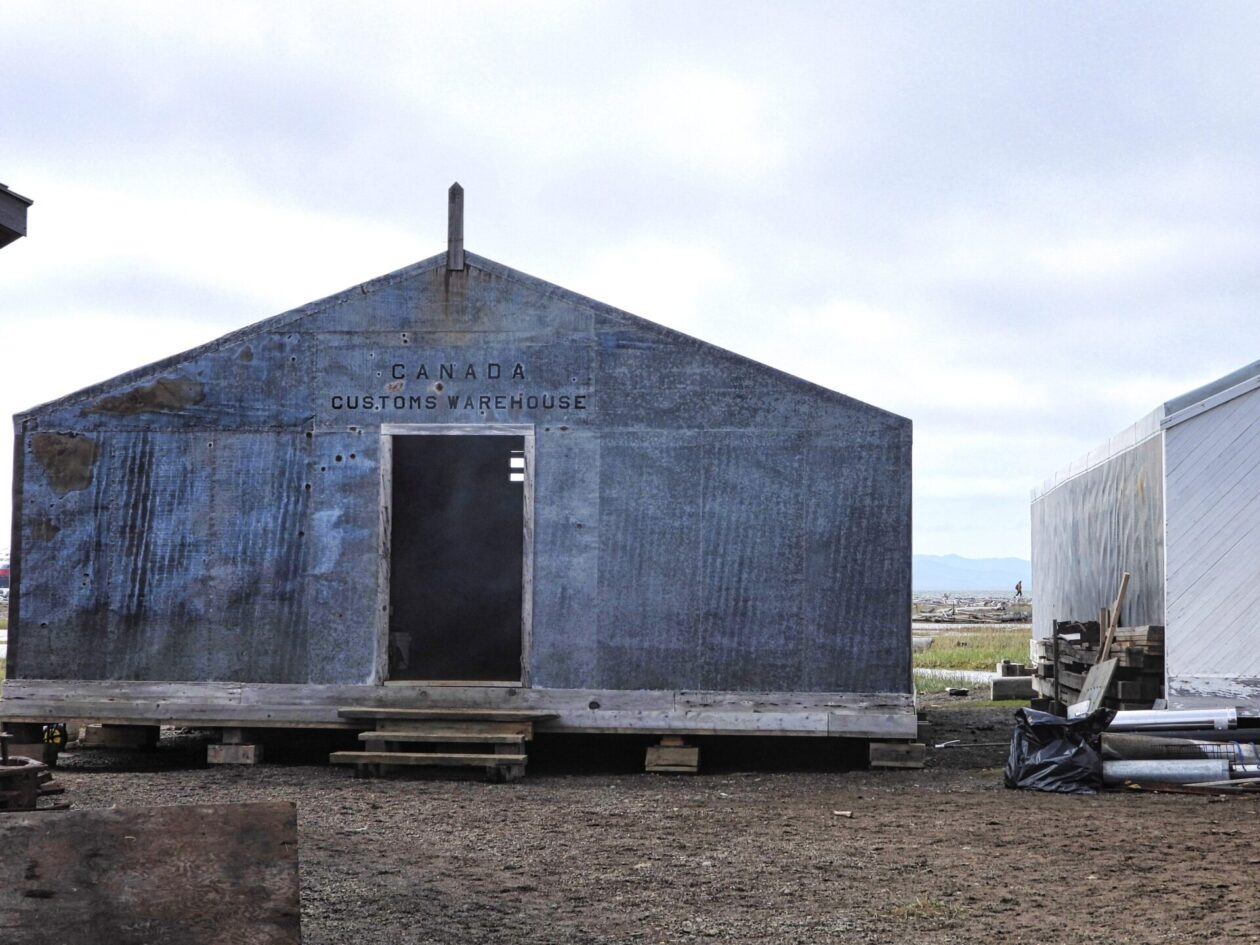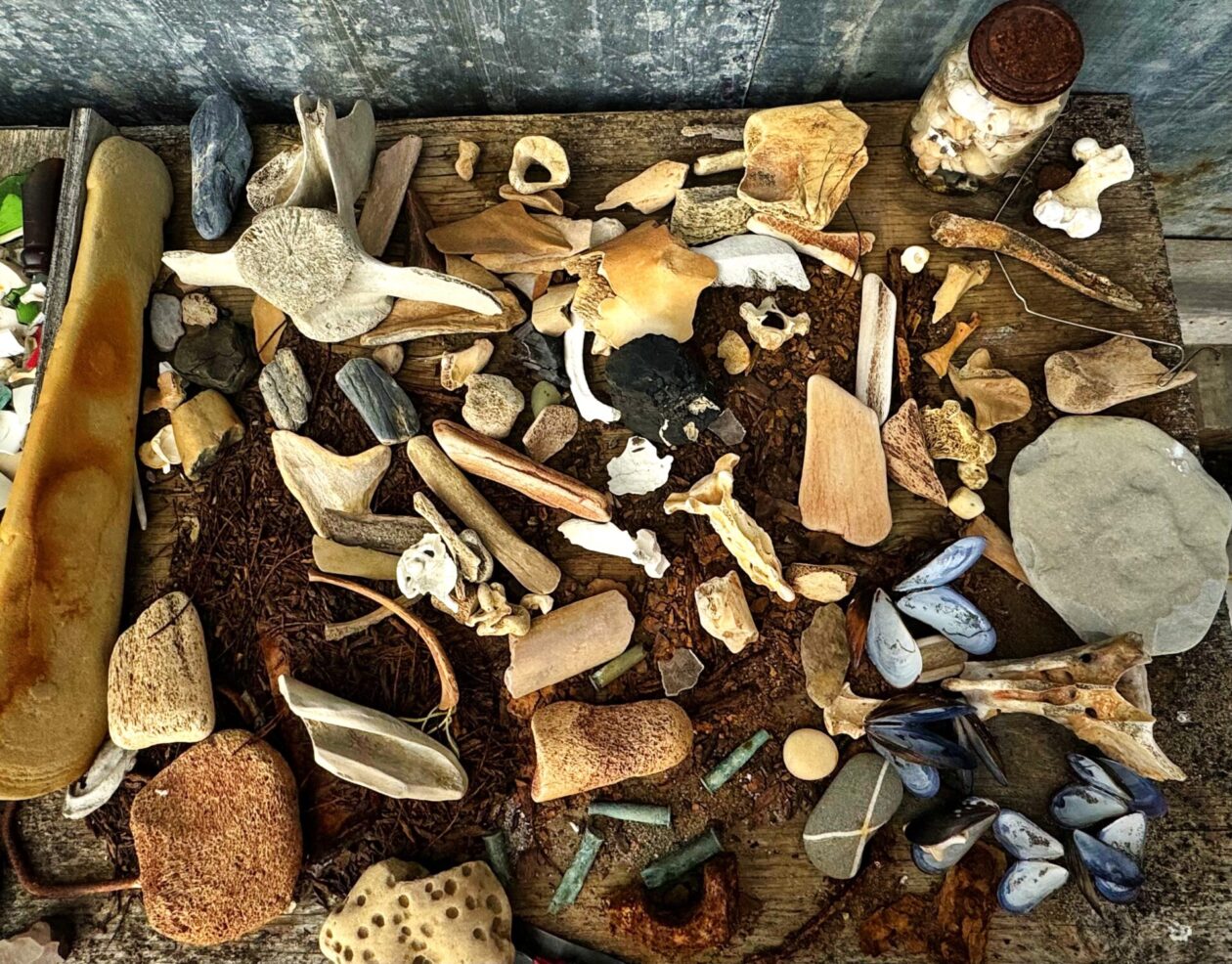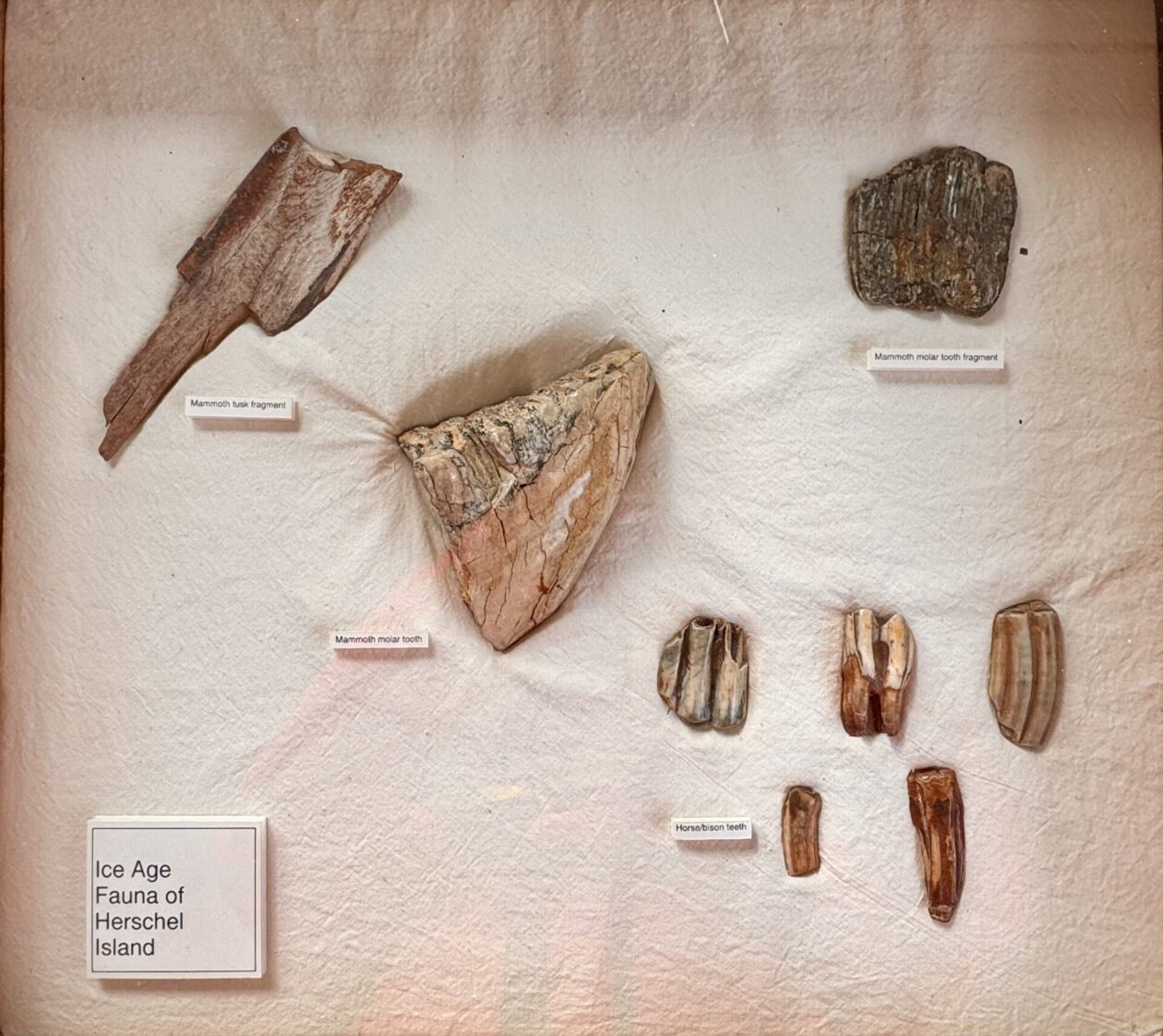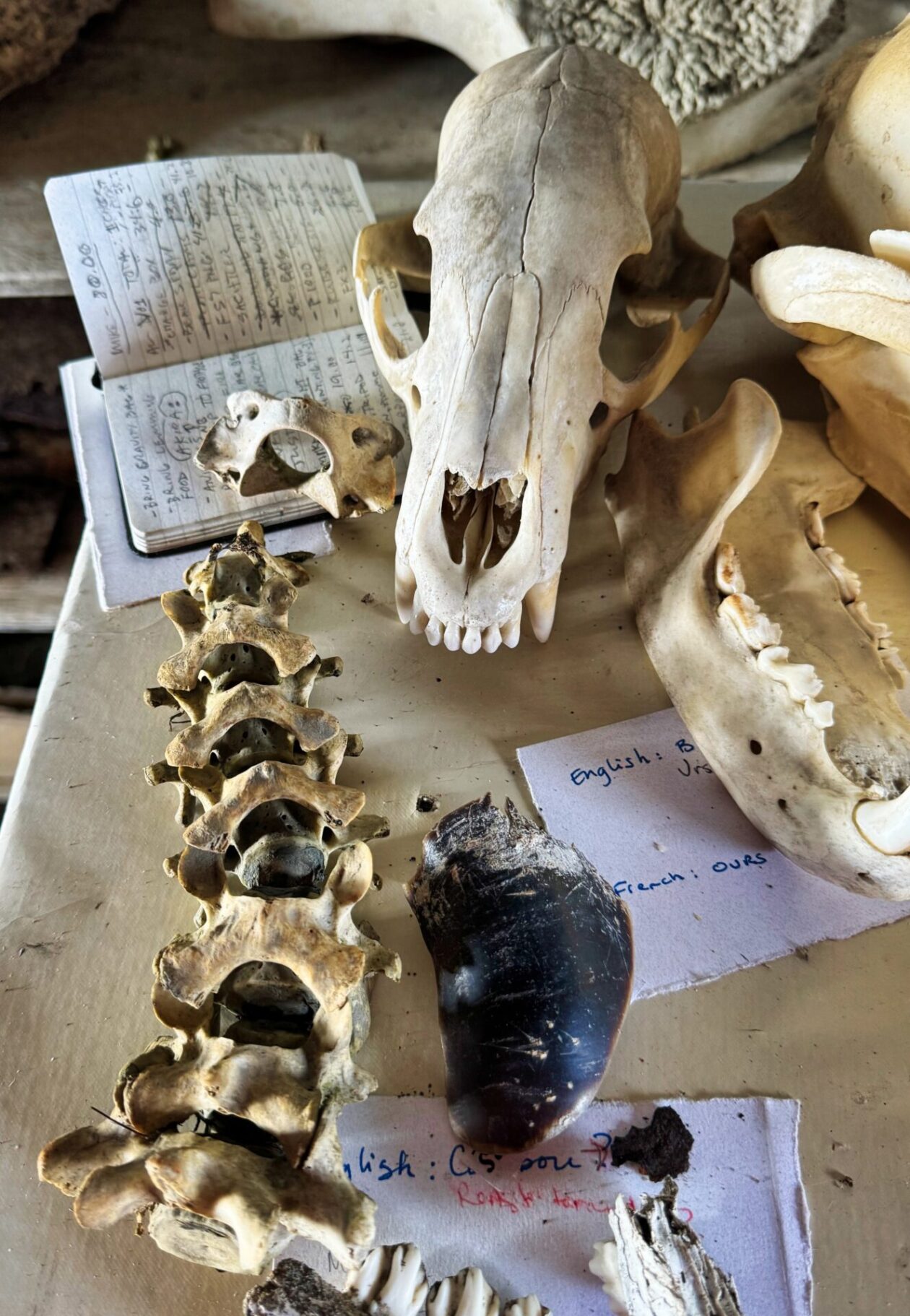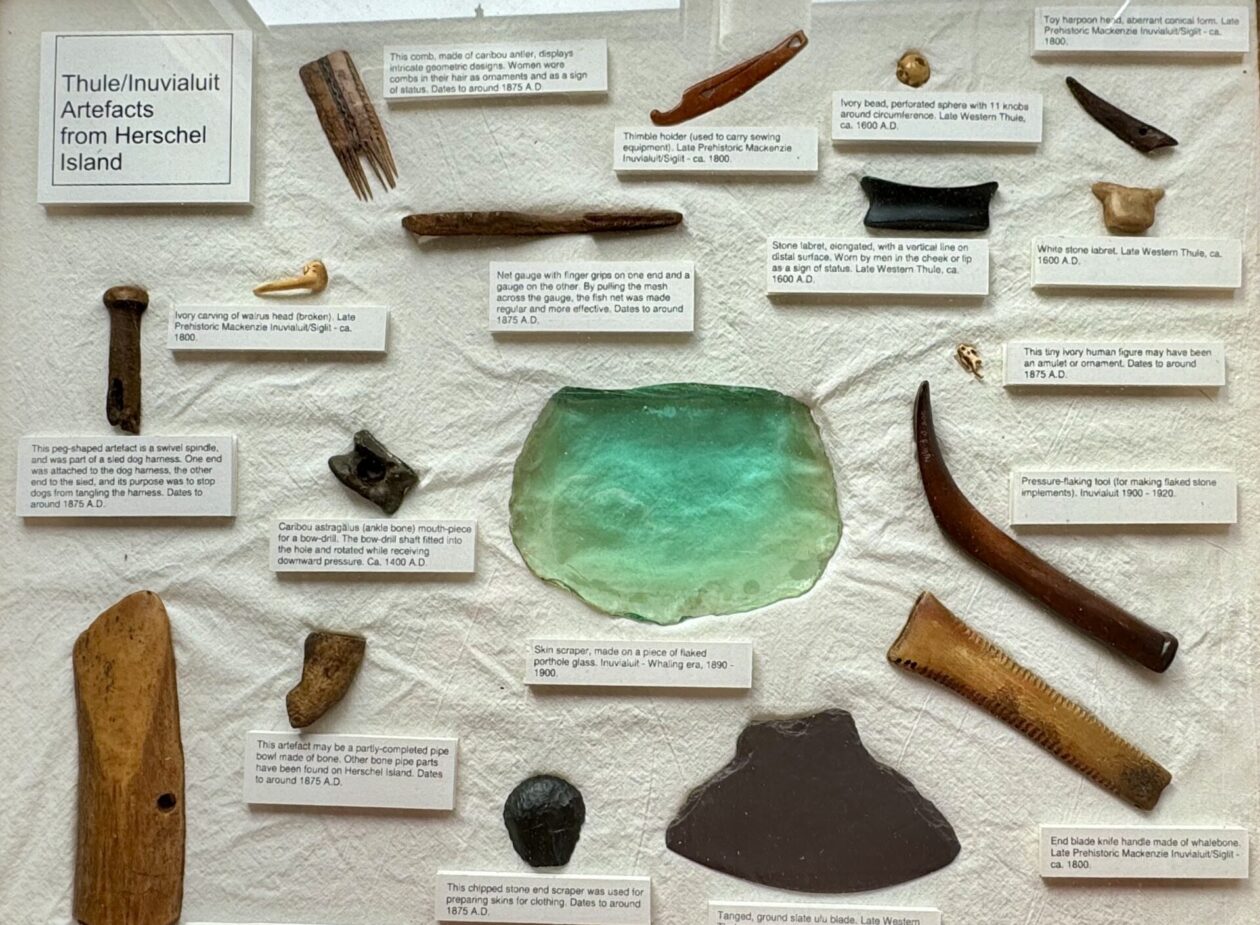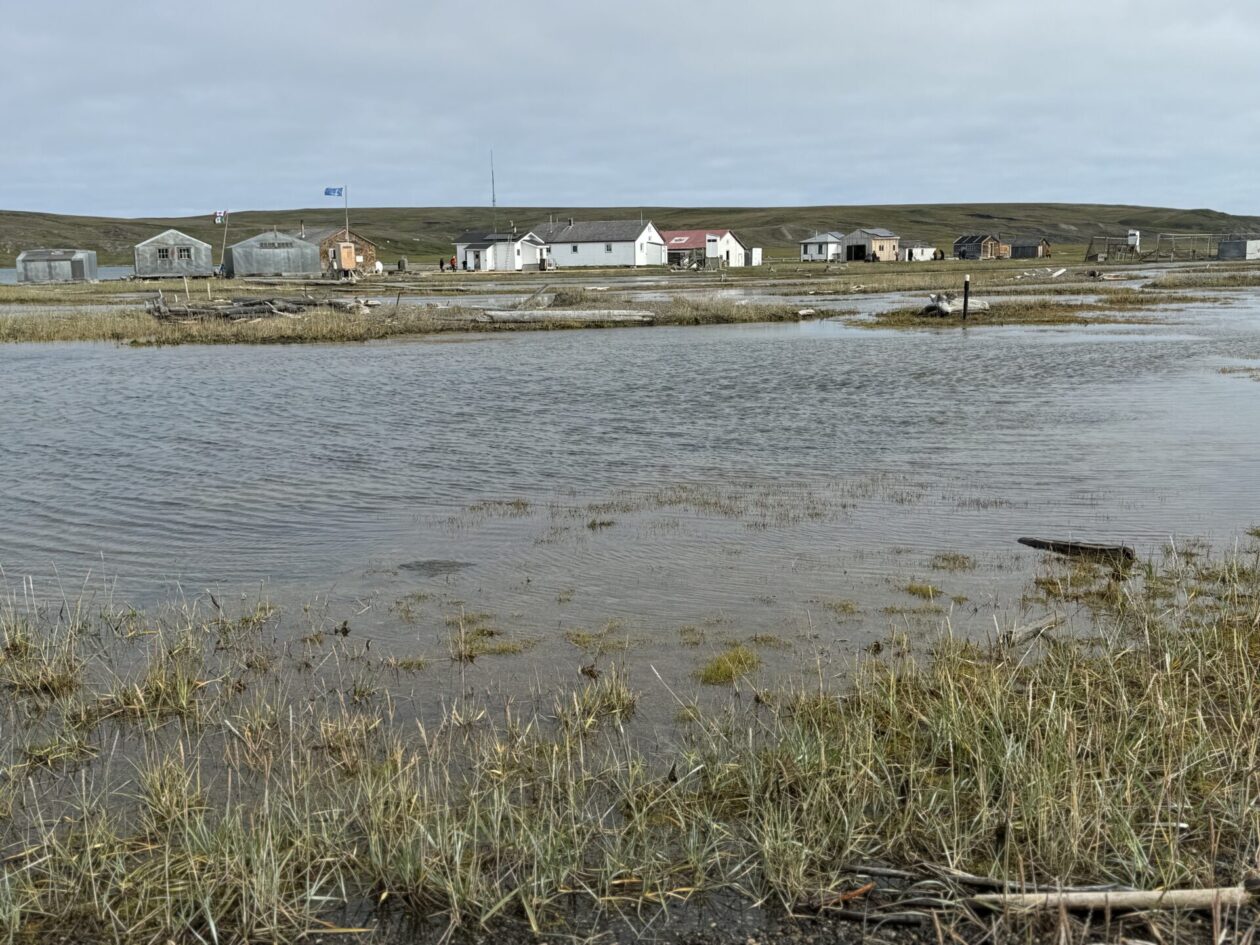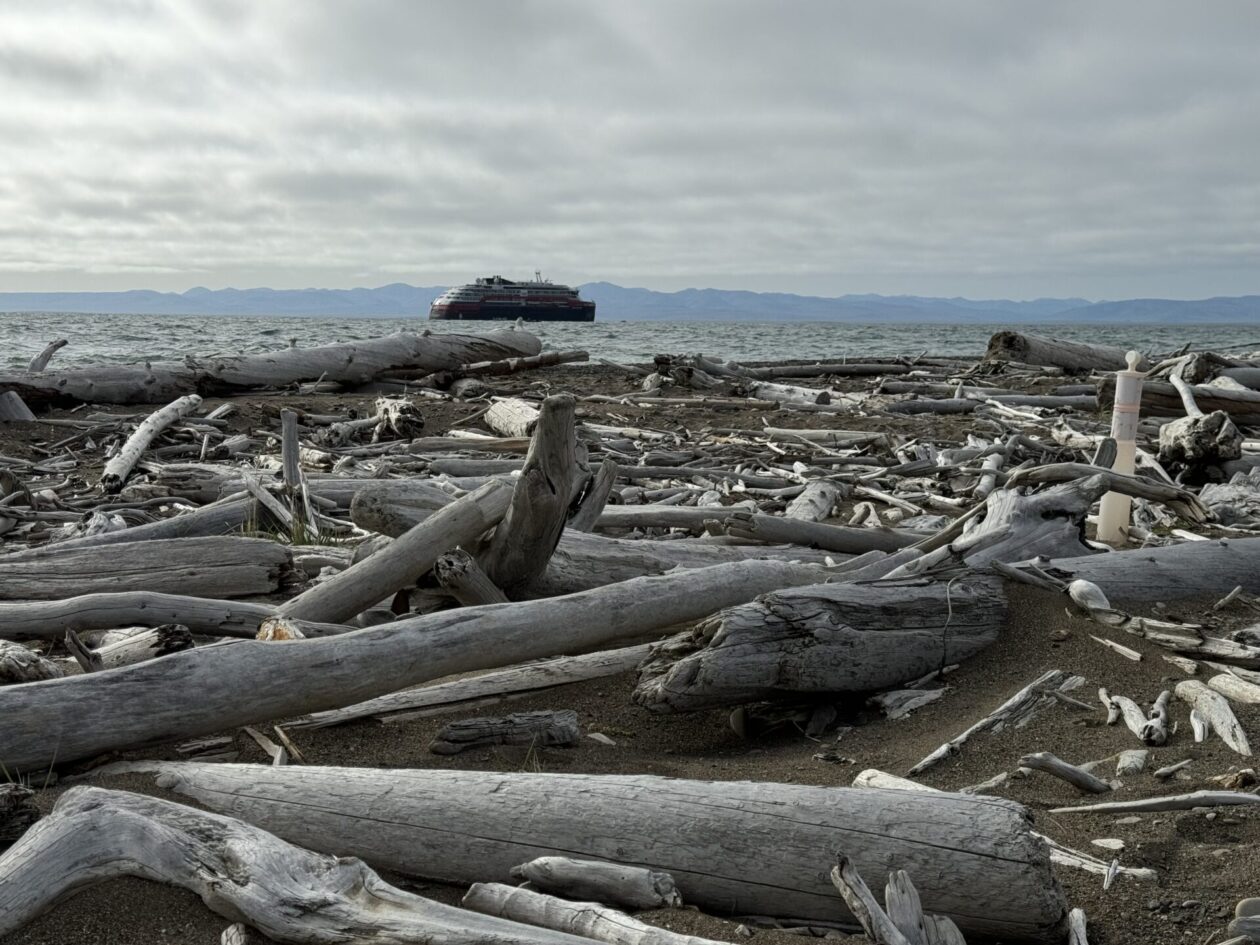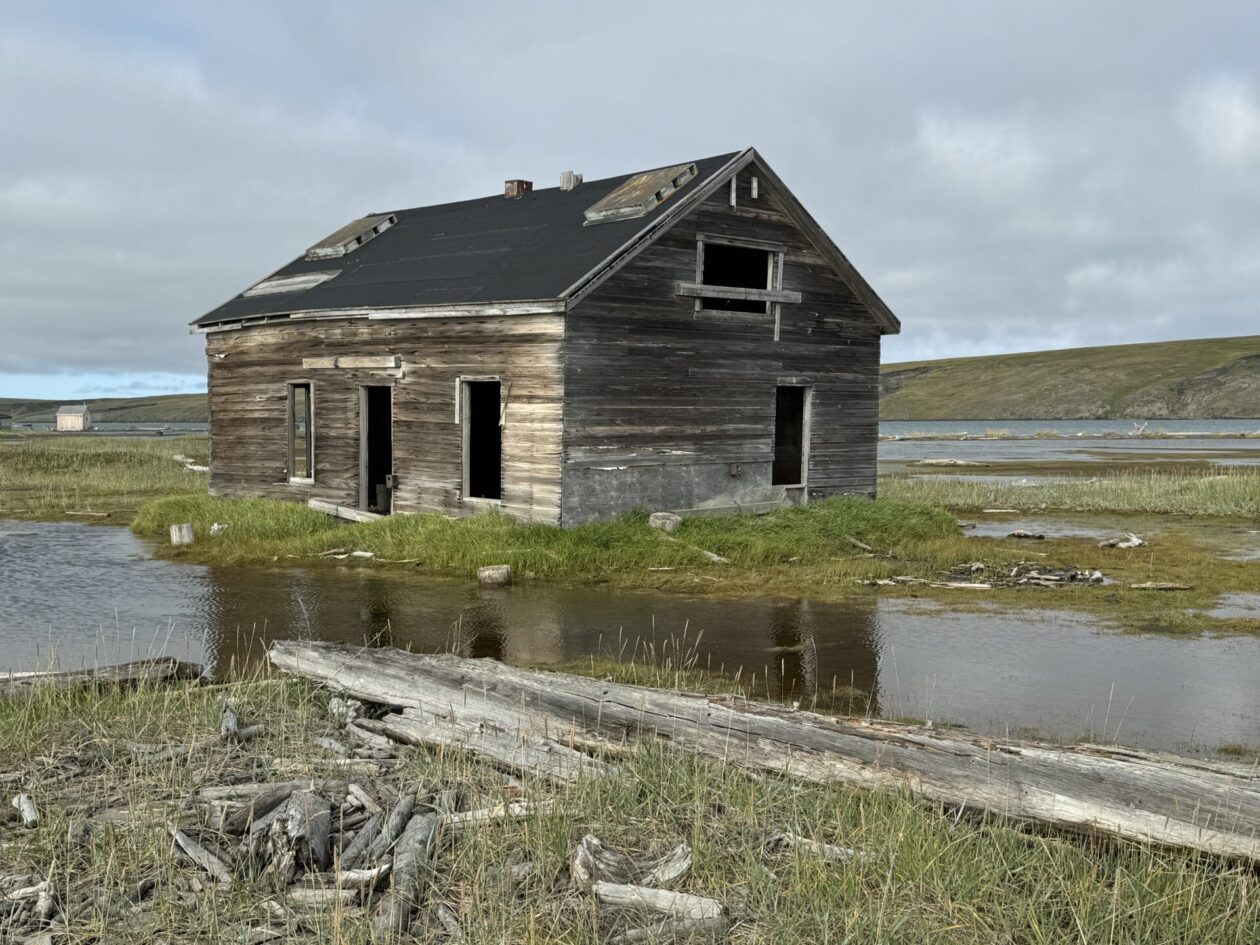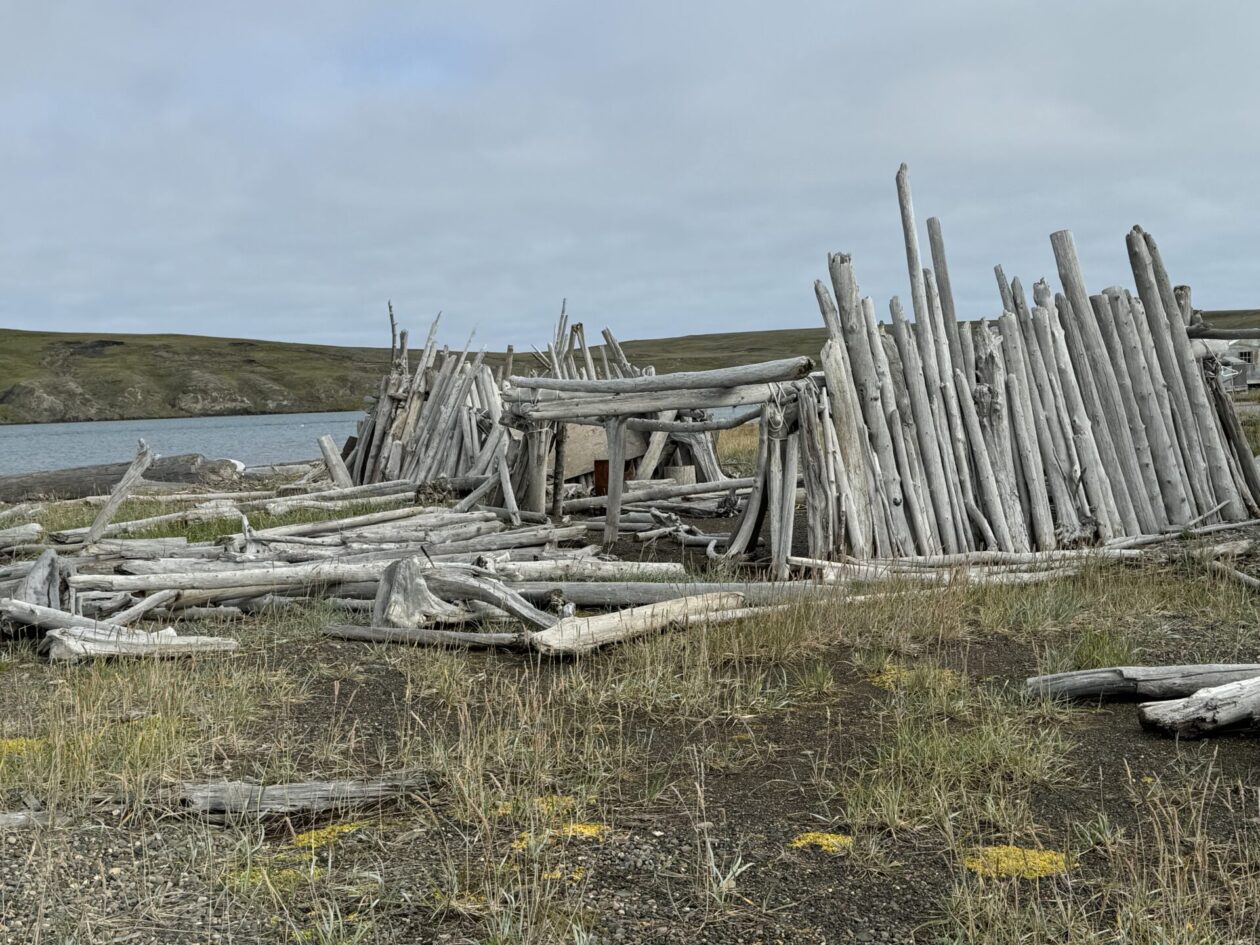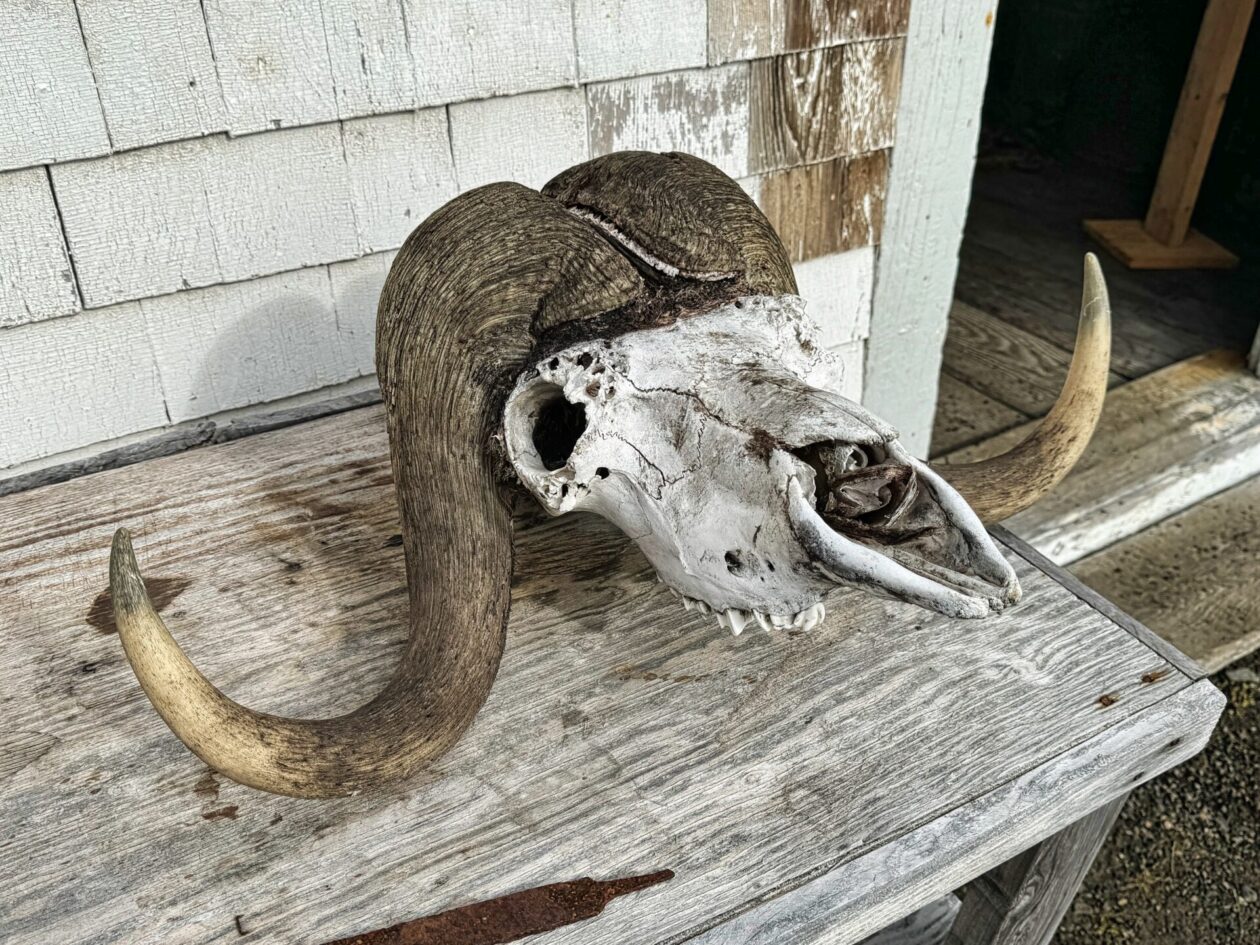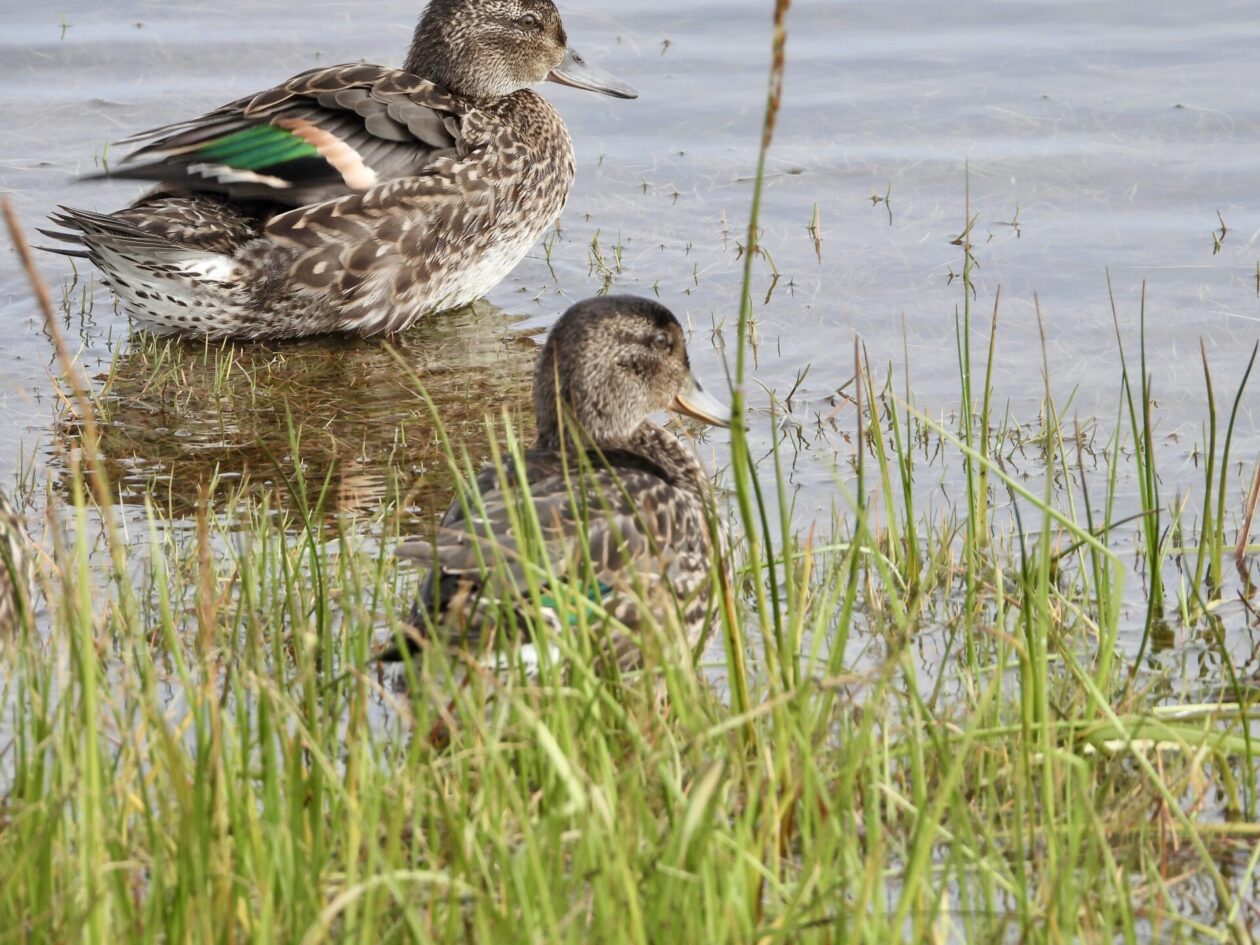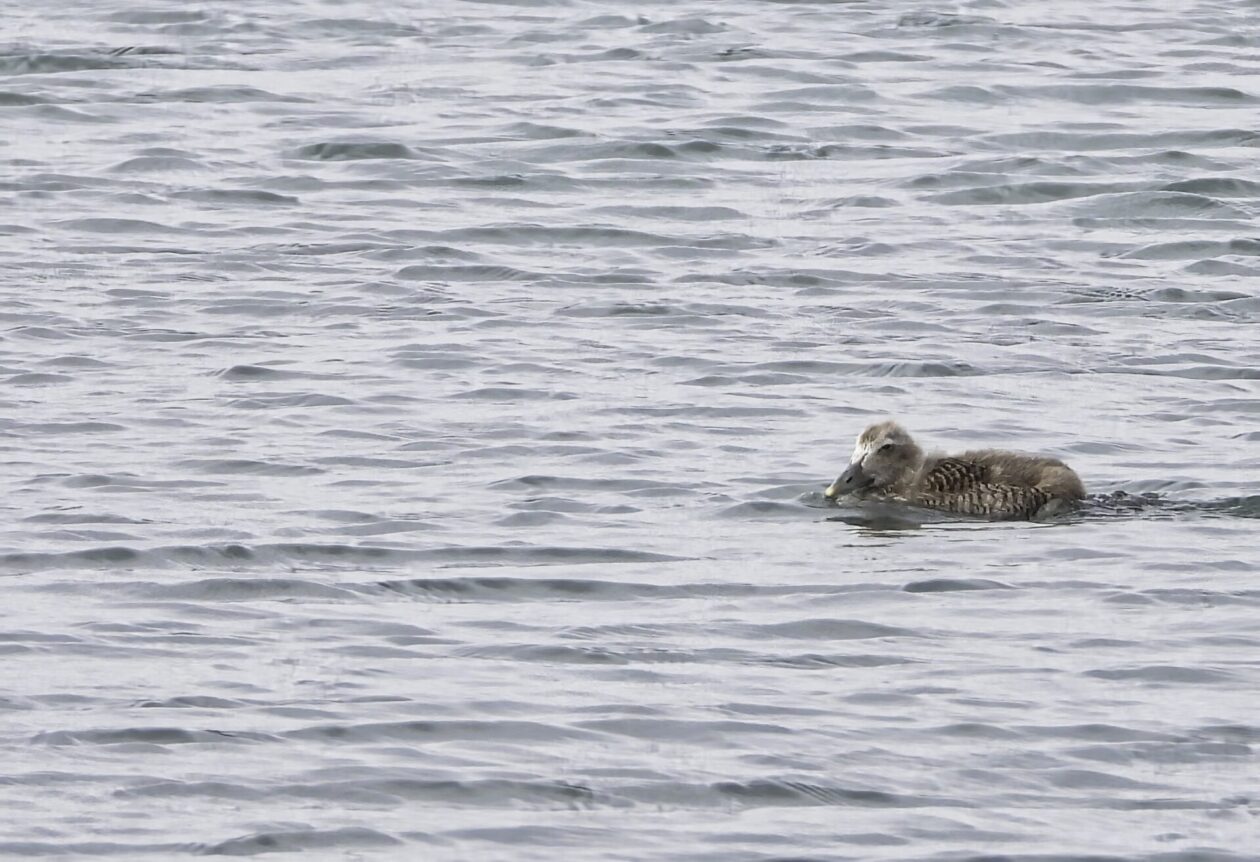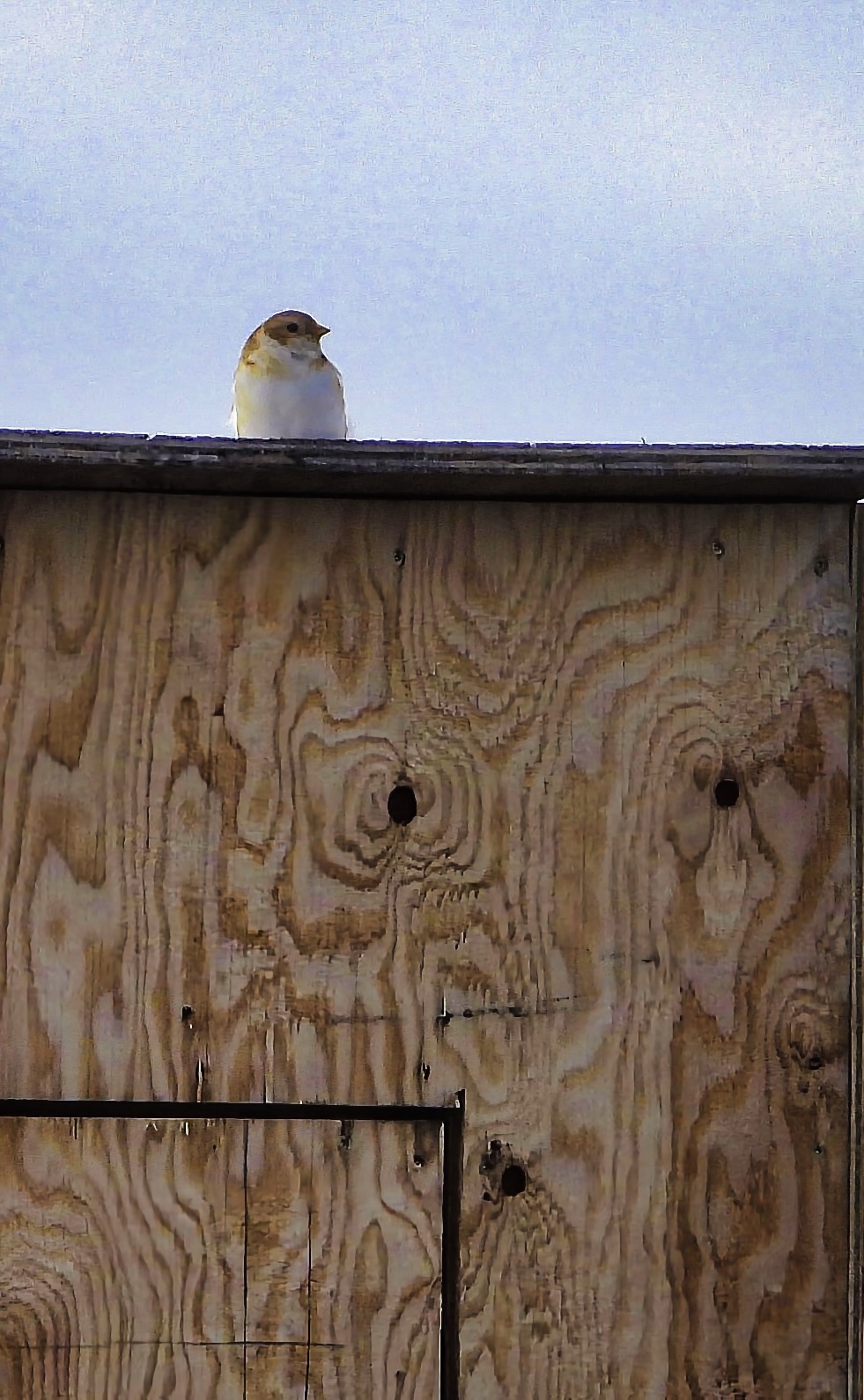- Start of trip and Nome, AL
- Herschel Island, Yukon, Canada
- Sea Day, a surprise, and the Smoking Hills, Northwest Territories, Canada
- Ulukhaktok, Northern Territories, Canada
- Murray Island, Nunavut, Northern Canada, Canada
- Cambridge Bay, Nunavut, Northern Canada
- Citizen science and Borge Island
- Gjoa Haven, Nunavut, Northern Canada
- A busy day at sea — polar bears, musk ox, and plankton, oh my!
- Prince Leopold Island, Beechey Island, and Radstock Bay, Nunavut, Northern Canada
- Croker Bay and Dundas Harbor, Nunavut, Northern Canada
- Pond Inlet and the Inuit, Nunavut, Northern Canada
- Ilulissat, Greenland
- Sisimiut, Greenland
- Red Bay, Labrador, Canada
- Corner Brook, Newfoundland, Canada and end of trip
Today we did our first landing on Herschel Island (or Qikiqtaruk), a 45 sq. mile sedimentary stand of land that was thrust up by a lobe of Laurentide glacier ice. It is the Yukon’s only large offshore island. Herschel Island is largely rolling tundra that ranges in height from sea level to around 600 feet. Because there is no underlying bedrock, the island is subject to a lot of erosion. Because of climate change, the permafrost is melting (five years ago, the permafrost started at about 1.5 feet — today it is more than 3 feet). In fact, where there have been cave-ins on the hillsides, it’s apparent how low it is. Both of these, as well as sea level rise (and the higher tides that are now quite common) contribute to flooding in the lowlands which impacted our ability to walk around.
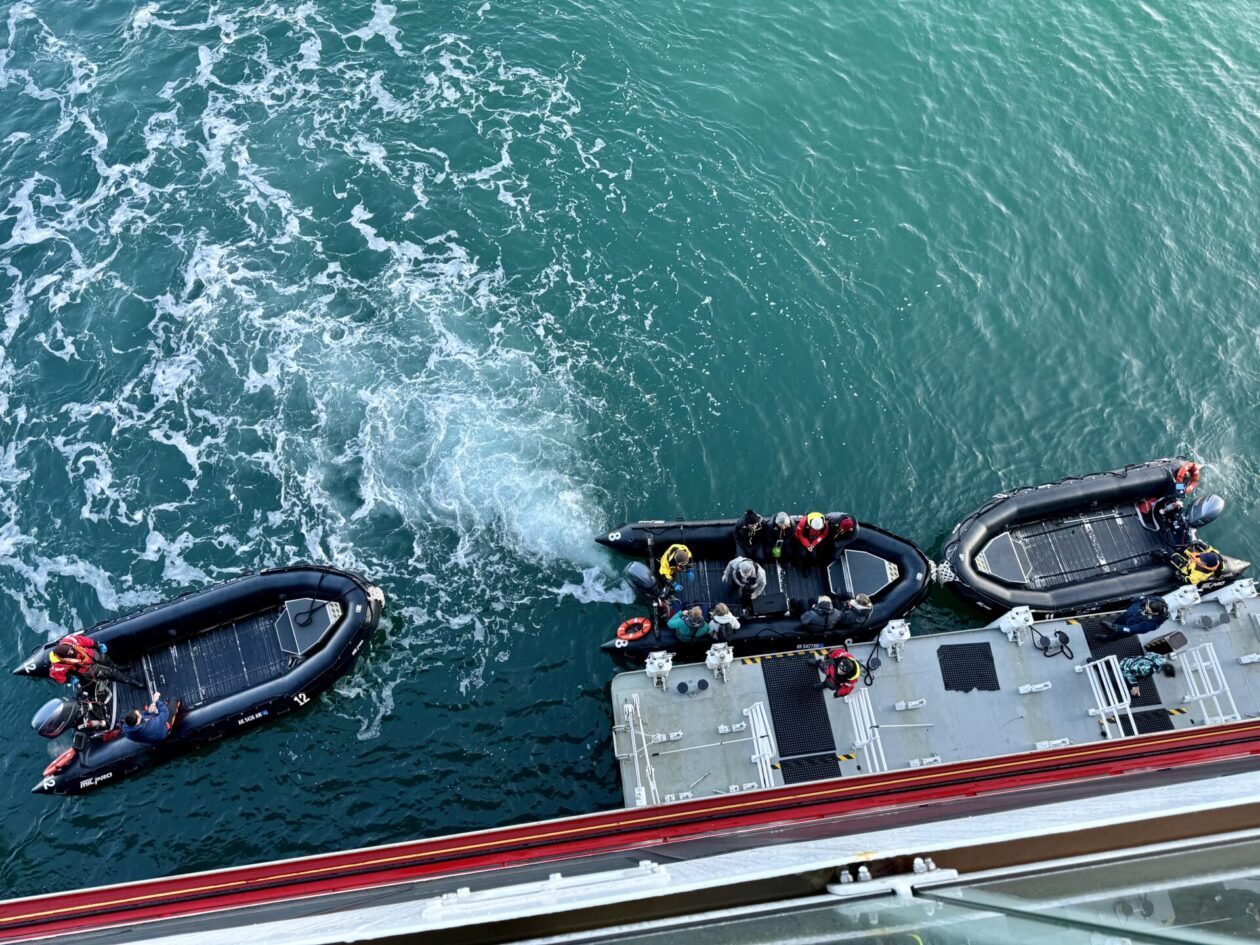
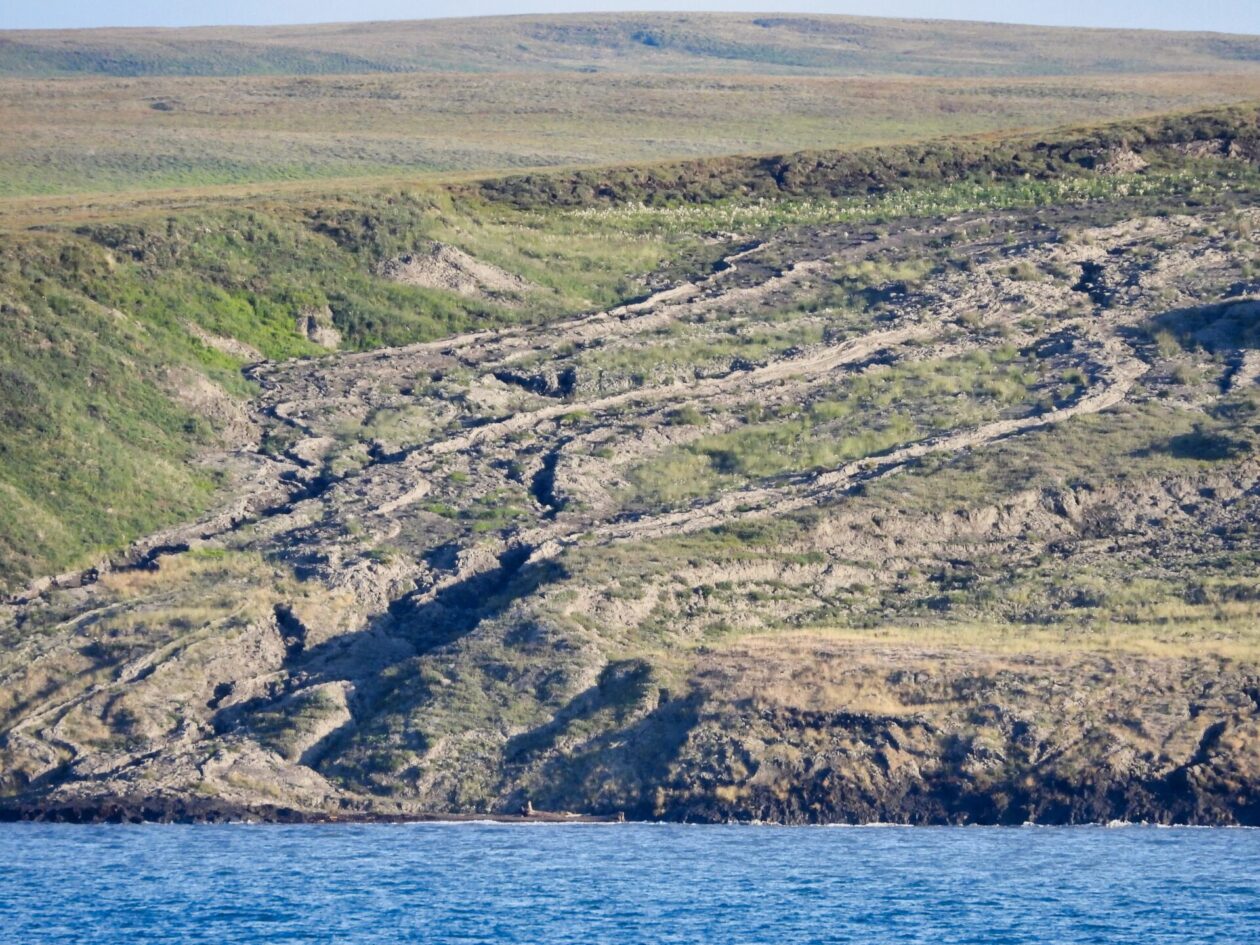
Today the island is uninhabited, other than the ranger who is stationed here as part of the Qikiqtaruk Territorial Park, but habitation of the island started over 1000 years ago with people of the Thule culture. The Inuvialuit people have continued to use this place as a gathering area up to current day. The first Europeans came in 1826 as part of an expedition by Sir John Franklin — a name you’ll be hearing about a lot during this trip. He’s the one that gave the island its modern name, although no-one is sure who “Herschel” was. What became abundantly clear was that the waters in this part of the Beaufort Sea were teeming with bowhead whales that had been largely depleted in other areas of the Arctic. The island also had a good harbor (Pauline Cove) for whaling ships that would overwinter there to await the short whaling season. So off we went, taking our Zodiacs to shore at Simpson Point. What we saw on our walk was the largely preserved remnants of the village that sprung up there. At it’s peak, 1500 people lived either on the island or on ships that were anchored there. The largest building on the island is the Community House, built in 1893, that served as a recreation room, offices, and even a church. It is believed that it is the oldest framed building in the Yukon. Today it serves as a visitor center. Sadly, the rising waters caused an outbreak of black mold in the building and we couldn’t visit it. Some of the other houses and warehouses are maintained and some contained various flotsam and jetsam from early in the island’s industry to the present. Other houses and buildings have been long abandoned. The ruins of a lot of lean to structures also remained.
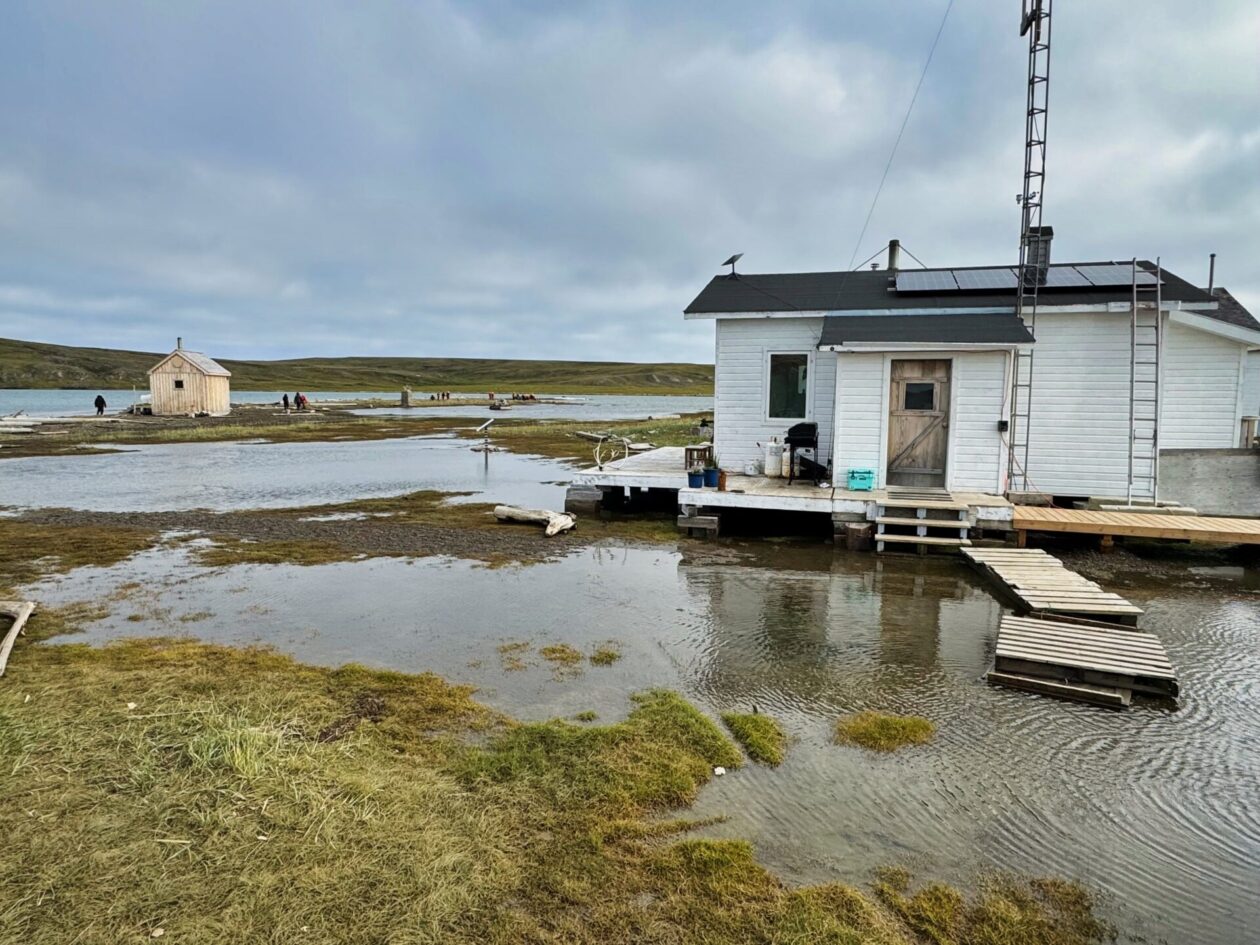
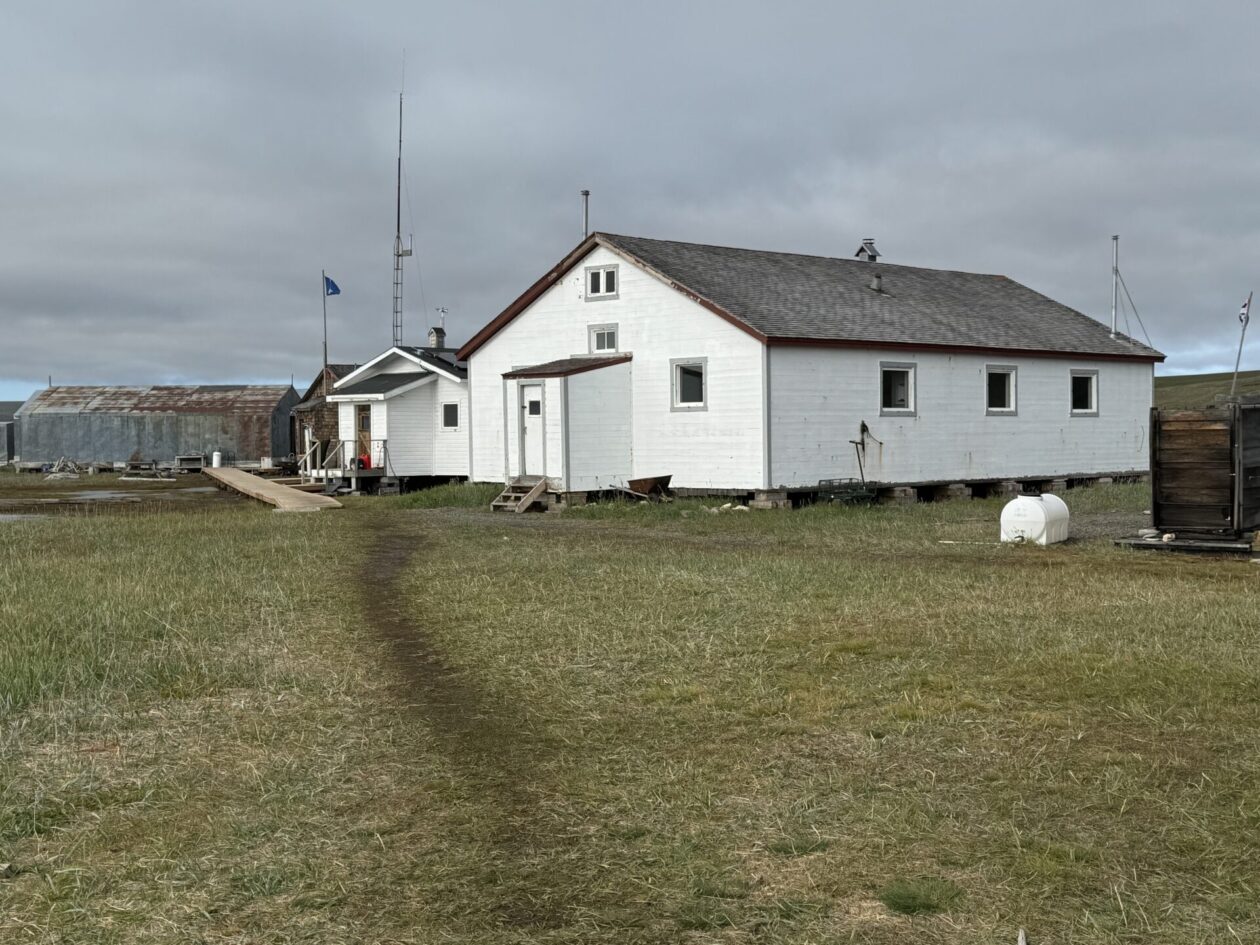
We didn’t get a chance to hike up into the hill to look at the tundra, which is really unfortunate since this is probably the lushest tundra we will see on the trip. As we continue east, the land will become much more arid, with much less vegetation. People who made it up into the hills were also rewarded with seeing a couple of caribou. For our part, we wandered up the beach and saw a number of birds, including green winged teals, snow buntings, and even some common eiders that like to see protection in the middle of all the driftwood. And, for an island with no trees, you might ask where all the driftwood comes from. It turns out that we are close to the Mackenzie River, Canada’s longest river and most of the trees, logs, etc. flow from this northern running river.
Anyway, a good first landing and we even got some sun!
This entry was posted in Canada, Cruising, Travel, Yukon